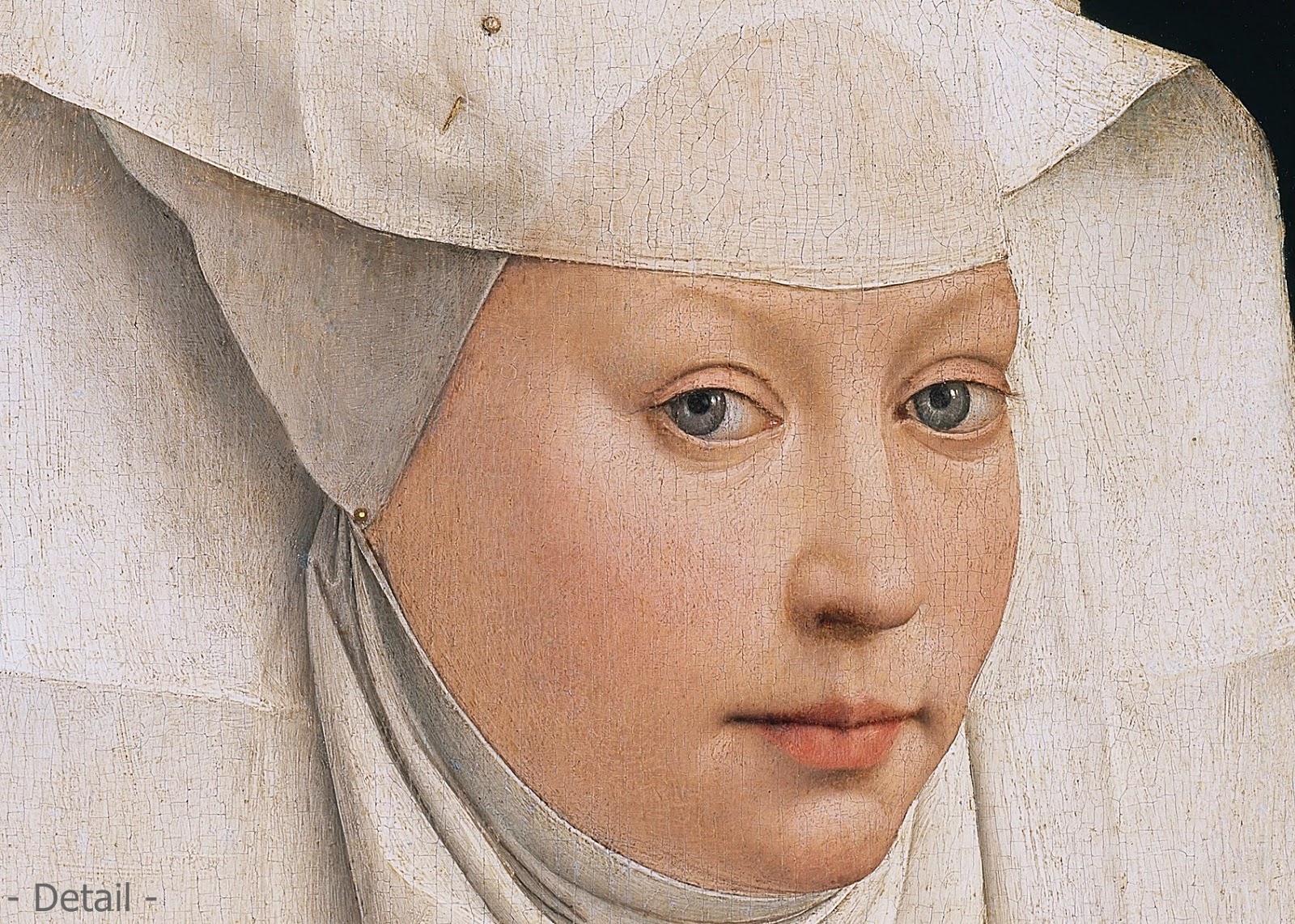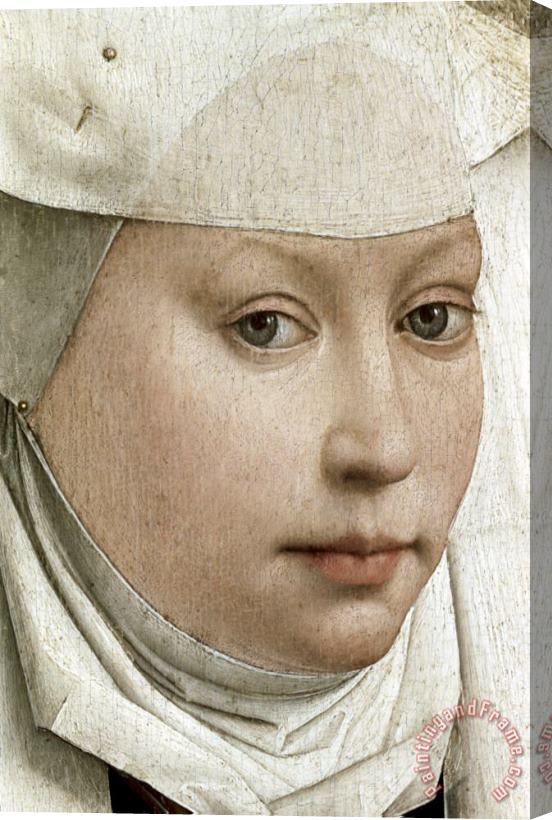
of Rogier van der Weyden (1399 or 14001464) altarpiece
Flemish Painter Born: 1399-1400 - Tournai, France (now Belgium) Died: June 18, 1464 - Brussels, Burgundian state (now Belgium) Movements and Styles: Northern Renaissance Rogier van der Weyden Summary Accomplishments Important Art Biography Influences and Connections Useful Resources Summary of Rogier van der Weyden

Van der Weyden, Portrait of Antony of Burgundy Rogier van … Flickr
The Virgin and Child Enthroned (also known as the Thyssen Madonna) is a small oil-on-oak panel painting dated c. 1433, usually attributed to the Early Netherlandish artist Rogier van der Weyden. [1] It is closely related to his Madonna Standing, completed during the same period.

Rogier Van Der Weyden San Luca Ritrae La Madonna (1435 circa)
Rogier van der Weyden (ur. 1399 / 1400 w Tournai, zm. 18 czerwca 1464 w Brukseli) - malarz, przedstawiciel szkoły niderlandzkiej. W 1435 roku został malarzem miejskim Brukseli. Nie sygnował i nie datował swoich dzieł. Życiorys Życie w Tournai Przyszedł na świat w Tournai (obecnie Belgia ).

Damn Fine Art Rogier van der Weyden. Portrait of a Woman with a winged
Rogier van der Weyden ( Dutch: [roːˈɣiːr vɑn dər ˈʋɛidə (n)]) or Roger de la Pasture (1399 or 1400 - 18 June 1464) was an early Netherlandish painter whose surviving works consist mainly of religious triptychs, altarpieces, and commissioned single and diptych portraits.

of Rogier van der Weyden Portrait of a Lady, 1460 Портрет
Rogier van der Weyden, born in Tournai around 1399, was the most influential Northern artist of the fifteenth century; his many works were copied and his style was imitated by artists for a century after his death.

Rogier van der Weyden Detail of Portrait of a Young Woman Stretched
Jan van Eyck and Rogier van der Weyden became the most renowned painters in Europe, Van Eyck acquiring legendary status as the purported inventor of oil painting ( 33.92ab ).

" Retable de la déposition de Croix " rogier van der Weyden Краска
This triptych is the principal creation and the work that has given the name to an anonymous follower of Rogier van der Weyden, previously identified as Vrancke van der Stockt.The triptych belonged to Leonor de Mascarenhas (1503-1584), a Portuguese lady who moved to Spain in 1526 and was aya to Philip II and afterwards to his son Don Carlos. When in 1564 she founded the convent of Franciscan.

Philip the Good, Duke of Burgundy, copy after a portrait by Rogier van
The center panel of the present work is a late reflection of a lost but often copied Descent from the Cross by Rogier van der Weyden. To this essentially fifteenth-century composition have been added wings with individual saints that show the influence of the early-sixteenth-century Antwerp painter, Quentin Massys. There is in-painting along.

Damn Fine Art Rogier van der Weyden. Portrait of a Woman with a winged
Changing even very slightly a composition by Van der Weyden is inevitably dangerous and usually has destructive effects, which shows how carefully Rogier considered the placing of every line, every shape, every colour (Campbell, L.; Pérez Preciado, J. J.: Rogier van der Weyden, Museo Nacional del Prado, 2015, pp. 142-144).

Pin on Early Modern Europe
The Descent from the Cross was painted for the Chapel of Our Lady Outside the Walls at Leuven, which was founded in the fourteenth century by the Great Crossbowmen`s Guild, sold in 1798 and demolished soon afterwards.The two small crossbows that hang from the tracery in the corners of the panel indicate that it was commissioned by that guild. The earliest datable copy, the Edelheere Triptych.

Daily Artist Rogier van der Weyden (1399/1400 June 18, 1464)
Campbell, L. Van der Stock, J., Rogier van der Weyden 1400-1464. Master of passions, Waanders Uitgeverij - Davidsfonds, Lovaina, 2009, pp. 214-215, 386-388. Martens, Didier, La 'Lamentation aux figures aux paupières baissées' une oeuvre perdue de Rogier van der Weyden? En:, Rogier van der Weyden in context. Seventeenth Symposium for the study.

Rogier van der Weyden St Mary Magdalene WGA25731 Rogier van der
Rogier van der Weyden, (born 1399/1400, Tournai [Belgium]—died June 18, 1464, Brussels), Northern Renaissance painter who, with the possible exception of Jan van Eyck, was the most influential northern European artist of his time. Though most of his work was religious, he produced secular paintings (now lost) and some sensitive portraits.

Rogier van der Weyden at Prado Medieval Histories
The Ghent Altarpiece, a commissioned polyptych from around 1432, is perhaps van Eyck's most famous work. Rogier van der Weyden. Rogier van der Weyden is the last of the three most renowned Early Flemish painters. An apprentice under Robert Campin, van der Weyden exhibited many stylistic similarities, including the use of realism.

Przyjemnie jest chudnąć Ideały kobiecości
Composition: Van der Weyden designed this painting to have a two-tiered composition, with a top part - comprising the majority of the panel space - representing heaven and the bottom part showing earth. Heaven is depicted as a cloud of gold, upon which are seated the apostles, a pope, a bishop, and king, a monk, three female saints and the Virgin Mary and St. John the Baptist toward the center.

Rogier van der WeydenMadonna col Bambino in una nicchia, 14251430
Rogier van der Weyden's exquisitely tender representation of the embracing Virgin and Child demonstrates his superlative drawing skills, his feel for design, and his unrivaled handling of oil paint. The painting became a highly popular model for private devotional works, as numerous miracles were attributed to it..

Portrait of a Lady by Rogier van der Weyden (c.13991464) painting on
FRANKFURT Here at the Städel Museum "The Master of Flémalle and Rogier van der Weyden" is an old-fashioned whodunit. Almost exhaustingly erudite, it mixes up very great Netherlandish.